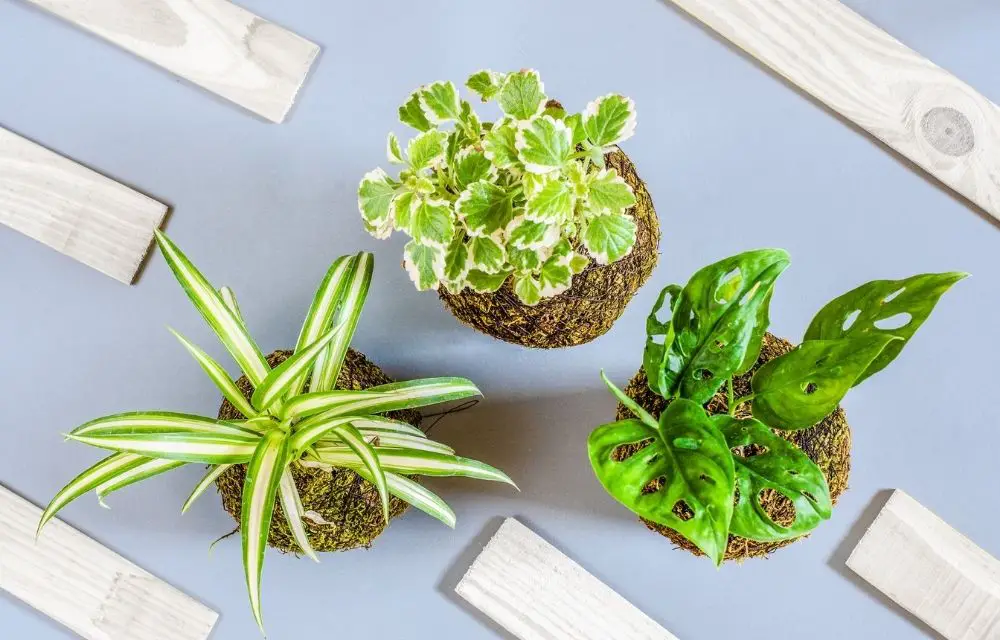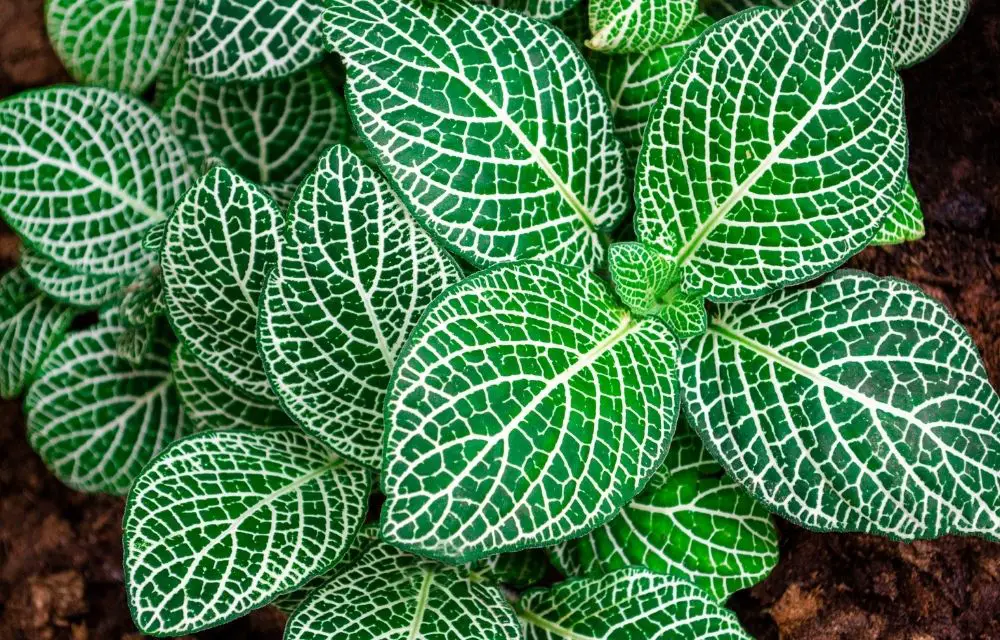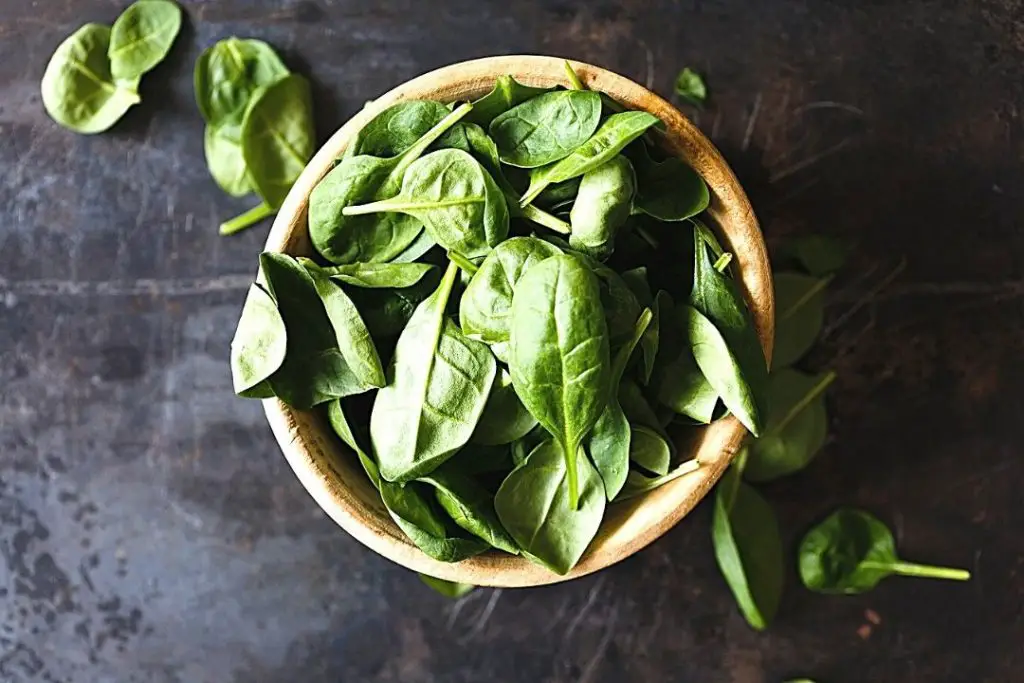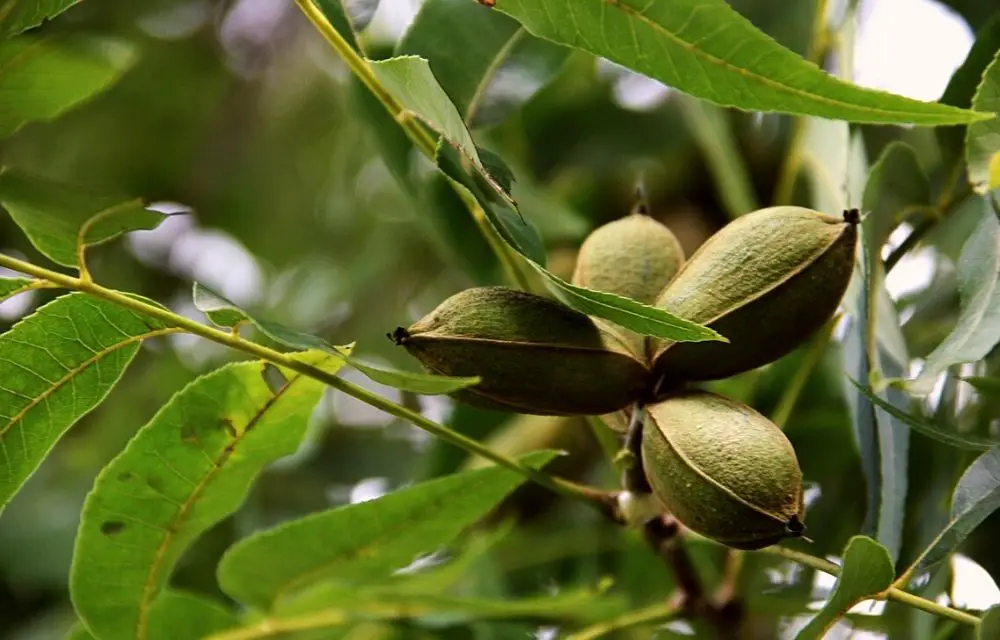Today we are going to look at a very interesting gardening topic which is the best plants for kokedama. Kokedama translates to moss ball which is a ball of soil that is covered in moss on which a plant grows. This style of gardening originates from Japan and is a popular gardening style used in Japanese gardens.
Kokedama is also called poor man’s bonsai. It’s made of wet akadama soil and keto formed into a ball. The plant is set into the ball and afterwards, the moss is wrapped around. Aluminium wire or nylon wire fixes the whole bundle and is sometimes used to suspend the kokedama in the air.
This is a beautiful and interesting way of planting plants without requiring the usual plastic or clay pots to plant our plants in. However, there are some plants that thrive better than others in kokedama and this article will discuss the best plants for kokedama.
What Is a Kokedama?
A kokedama translates to moss ball in English. It is a ball of soil in which moss is grown on the outer layer to stop the soil from falling apart and an ornamental plant is commonly grown inside. This style of gardening is commonly found in Japanese gardens.
15 Best Plants for Kokedama
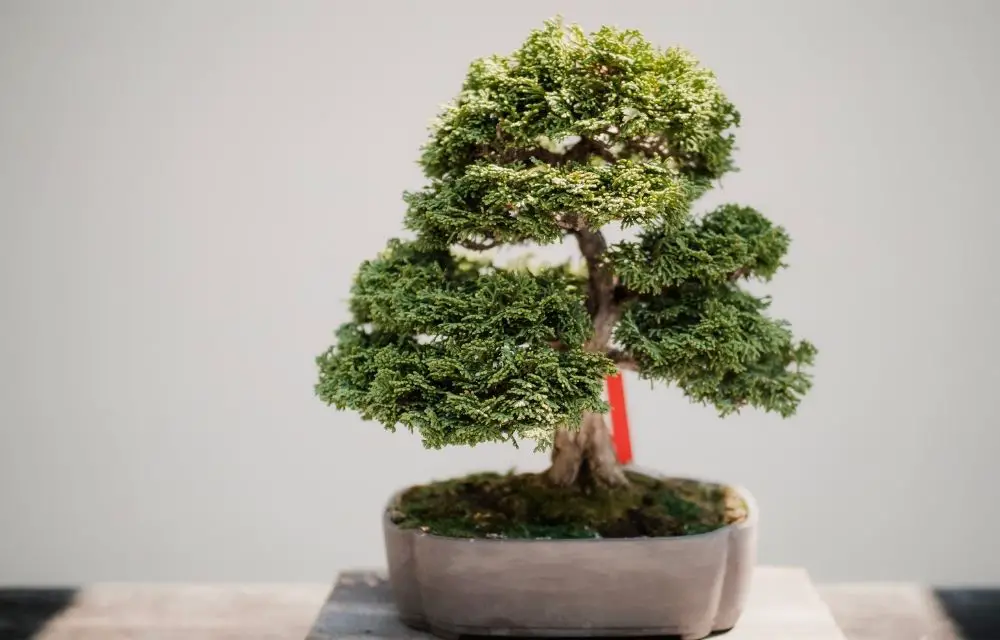
Ficus Tree Bonsai
The first plant on our list is one of the best plants for kokedama. The Ficus Tree Bonsai is a beautiful little bonsai tree to plant in your kokedama. It is definitely a wonderful addition to your garden. It has an attractive grey trunk and is topped by small, dark green oval leaves.
This product comes with the bonsai, a decorative container, soil and cares instructions for your new bonsai. This bonsai species is in the ficus family which is known as the golden gate variety which is perfect for growing indoors.
Your bonsai which is 4 years old will arrive between 5 to 8 inches tall in a 6-inch container. This plant thrives best indoors. Please refer to your care instructions for a deeper understanding of caring for your new bonsai.
This also makes a wonderful gift for a plant lover which can be placed in the office as cubicle decor or as a centrepiece in the kitchen, desktop, window or even as outdoor decor. A bonsai is definitely a plant that will stand out in your garden for its magical and unique look.
Your bonsai tree has been grown in a state-of-the-art greenhouse under precisely controlled conditions to achieve optimum health. If for any reason you are not completely satisfied with your tree or the service, please notify your vendor within 30 days of receipt. They will correct the situation to your satisfaction.
Hawaiian Red Anthurium
Next up is one of my favourite plants which my grandmother would grow plenty of in her beautiful garden. This plant is the Hawaiian Red Anthurium. This is a really vibrant plant to have because of this bright red colour that really stands out in the garden.
This authentic hawaiian red anthurium grows to about 6 to 10 inches in a 2-inch pot. It is grown in a certified pest-free nursery on the island of hawaii. Therefore, it is ensured that plants from the nursery are shipped directly to customers.
Anthurium, is a genus of about 1000 species of flowering plants, the largest genus of the arum family, Araceae. Common names include anthurium, tailflower, flamingo flower, and laceleaf which is a wonderful plant to grow in your kokedama.
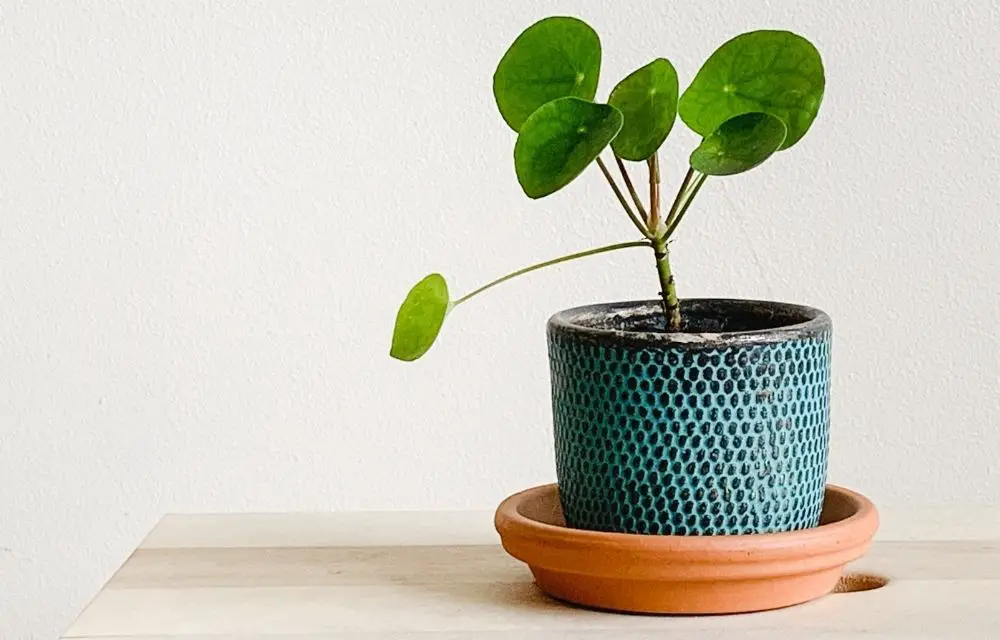
Chinese Money Plant
Next up on the list is the famous Chinese Money Plant which is an easy plant to have in the garden and is one of the best plants for kokedama. This plant comes fully rooted in a 4 inch pot that is ready to be planted upon arrival.
The Chinese Money Plant has a unique circle leaf shape that creates a beautiful variation in your garden. Additionally, this plant makes a great decor for your homes which has been trending recently.
The Chinese money plant (or Pilea) is frequently featured in Scandinavian interiors, where its bright green pancake-shapes leaves provide an adorable and welcome burst of color against white walls.
Although it is said to be a plant that is easy to grow, it can be quite challenging to find them in the plant stores. However, this rare species can be purchased directly from Amazon which will make lovely kokedama plants.
Norfolk Island Pine
The Norfolk Island Pine is another plant that will be great for growing in your kokedama.Norfolk Island pine trees (Araucaria heterophylla) are commonly used as those cute little house plant Christmas trees that you can buy around the holidays, but then the holidays end and you are left with a seasonally dated, living plant.
Just because your Norfolk pine is no longer needed as a holiday plant doesn’t mean that you need to abandon it in the trash. These plants make wonderful houseplants. They are definitely a unique tree to have growing indoors as it gives you a holidays type vibe.
While they may share the name and even resemble a pine tree, they are not true pines at all, nor are they as hardy as the standard pine tree that people are accustomed to. In terms of proper Norfolk pine tree care, they are more like a gardenia or orchid than a pine tree.
This is truly an interesting and unique choice of plant to grow in a kokedama which will create a creative look to your plants design.
Nerve Plant
The Nerve plant is a common plant you will see growing in terrariums or even mixed together with succulents. This plant makes for one of the best plants for kokedama.
Nerve plant is an easy plant to grow indoors, all you have to do is ensure the plant is evenly moist and not too wet or dry. It prefers bright but indirect sunlight which means a spot somewhere close to the window with partial shade is a perfect setting for the nerve plant.
The nerve plant is really a plant to spice up your garden. Because of its beautiful red and green leaves this plant usually stands out among the rest of the greens in the garden.
Another name for the nerve plant is the “Fittonia nerve plant”. They are also often known as the mosaic plant or painted net leaf. The nerve plant, or Fittonia argyroneura, from the Acanthaceae (Acanthus) family, is a tropically found plant with striking leaves of pink and green, white and green, or green and red.
This means there is a variety to choose from based on this one species alone. We wish you all the best in choosing the perfect nerve plant for your kokedama.
Peperomia Hope
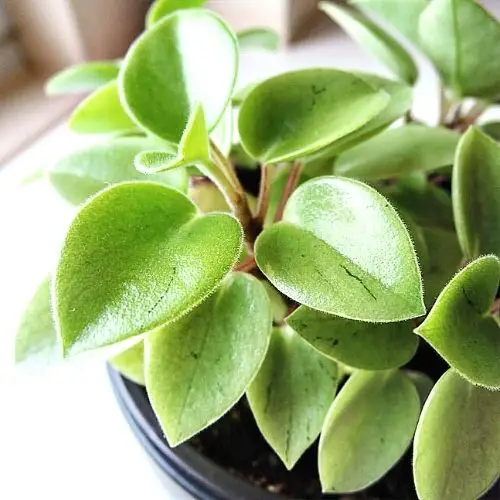 Peperomia Hope is a plant that has recently begun trending all over the internet. It is a very easy plant to grow and requires trimming only when needed.
Peperomia Hope is a plant that has recently begun trending all over the internet. It is a very easy plant to grow and requires trimming only when needed.
Peperomia Hope prefers bright but indirect sunlight and only needs watering when dry which makes for a perfect indoor plant for beginners. These plants are lovely because of their hanging vines that create a lovely atmosphere in the house and are perfect for a hanging kokedama.
Originally from tropical regions of Central and South America, peperomia plants have eye-catching leaves and a tolerance for a wide range of conditions.
Monstera Deliciosa
An easy to grow plant is the Monstera Deliciosa which is one of the most popular houseplants, perfect for your indoor space, with very little attention required. It also adds a vibrant splash of green in your home.
These plants thrive in a low to bright indoor or outdoor environment.This species of plant has wide heart shaped leaves with beautiful fenestrations which basically mean the holes and splits in the leaves.
Indoor plants are great mood boosters and inspiration for creativity to have in your home and this plant will look really beautiful if grown well in a kokedama.
Spider Plant – Chlorophytum Comosum
The next plant on this list is one of my favourite plants to grow in my garden because it is so easy to grow them and it is even easier to propagate them!
It is truly a joyous process to grow and probate these lovely little plants that are great for indoors and outdoors. These plants look wonderful in hanging pots and make great plants to be grown in kokedamas.
You will only ever need one of these plants because once they start thriving you’ll notice you have too many pups to propagate. Definitely a great plant to have in your garden as it also purifies the air which ensures that the air in your home is clean and fresh because of your green little helpers.
Purple Waffle Plant
This is a semi aquatic plant that will thrive when grown in a high humidity environment such as vivarium, terrariums or paludariums. It creates an excellent contrast between other types of foliage as it has beautiful dark green leaves with a wine-purple underside.
It can also be used as a live aquatic plant that will produce oxygen and absorb carbon dioxide to enhance the water quality of your aquarium. This is a premium quality plant that is professionally inspected, packed and organized with suitable boxes for all weather conditions to make sure that will retain the freshness and healthiness to our customer’s hands.
And of course, this is a really nice plant to have growing in your kokedama as it will create a beautiful contrast with the moss as its beautiful purples leave stand out brightly.
Dracaena marginata
Next up on our list of best plants for kokedama is the Dracaena Marginata which has unique and pretty light pink leaves. Grows well indoors and outdoors and also does a great job in purifying the air.
This is a plant that performs really well indoors and also performs well under direct sunlight. Dracaena Marginata is a low maintenance plant that even a beginner in the garden will be able to grow well.
Planting this species of the plant into your kokedama will be a pretty little addition to your garden as the light pink leaves will create a unique sight that your friends are definitely going to ask you about!
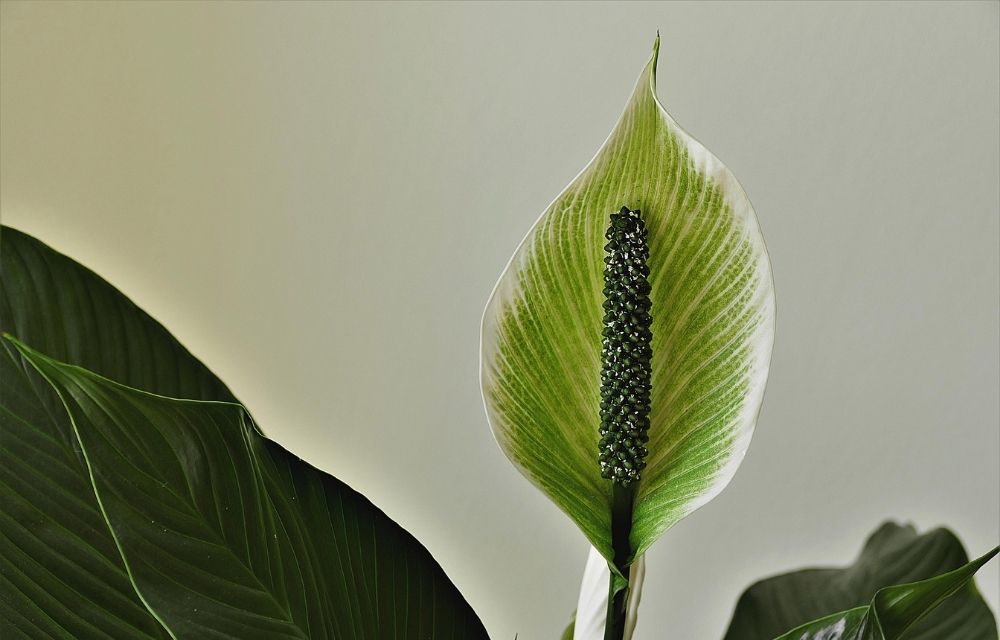
Peace Lily
The next plant that would do really well in a kokedama is the elegant Peace Lily. This is another plant that does really well indoors.
The Peace Lily requires low light and blossoms all year round. Just make sure that your plant is evenly watered and moist which will allow it to thrive.
Peace lilies are tropical, evergreen plants that thrive on the forest floor, where they receive dappled sunlight and consistent moisture. Replicating these conditions in the home is the key to getting your peace lily to be happy and healthy.
With enough light, peace lilies produce white to off-white flowers starting in the early summer, blooming throughout the year in the right conditions. Which will be a beautiful plant to grow in your kokedama.
Gold Child English Ivy
The next plant that grows really well in kokedama is the Gold Child English Ivy. This is a vine-like plant that grows really well as a hanging plant which is perfect for hanging kokedama.
This plant can grow in both sun and shade which means it can do well both indoors and outdoors. This is a rather easy plant to grow.
The leaf shape of this plant is very unique as it has a blend of two contrasting colours which are white and green. English ivies are primarily sought as a trailing ground cover lawn alternative that quickly creeps to cover areas (especially beneath large trees, to cover bald spots where grass won’t grow) with a maintenance-free carpet of beautiful foliage.
They are also popular as a climbing vine (the roots attach to most surfaces: buildings, fences, trellises, walls) and for topiaries. Often used to brighten shady areas, English ivies are sometimes grown as a climbing ornamental plant to cover buildings and reduce cooling costs. They are tolerant of drought and perform best when the soil dries out between waterings.
Red Robin Rex Begonia
Red Robin Rex Begonia is a really bright and vibrant plant that will stand out in your garden as it has dark red leaves. This is a plant that does well indoors and is easy to maintain.
It loves bright indirect light and enjoys being kept evenly moist which will ensure it grows healthily. Growing Red Robin Rex Begonias in a kokedama is a beautiful little pairing that will really make your garden look more magical.
Rex Begonias are admired for their fabulous foliage. The cultivar offers a wide range of colours, textures, and shapes. Its leaves can vary in form – from hearts to seashell swirls, to ivy-like forms, and more.
Marked by dramatic colours – often a mix of green, pink or burgundy – the Rex Begonia can also include metallic shades of greyish silver. Always breathtaking to behold! Native to tropical regions, as houseplants, Rex Begonias are good-natured – they are as easy to care for as they are easy on the eyes.
Staghorn Ferns
The Staghorn fern is one of the most elegant and exotic ferns in the jungle and brings a rainforest vibe to your garden. They grow easily and thrive very well under the right conditions.
This plant prefers bright but indirect sunlight which makes a perfect houseplant. Keep your plant evenly moist to ensure it is always happy and healthy.
These are great plants to have hanging in a pot or in your kokedama. Although you can find young staghorn ferns sold in pots, mature plants need to be mounted to a board or hung in a hanging basket. Why? Because, like air plants, staghorn ferns are epiphytic plants, which means that they grow on other plants or trees in their natural growing environments.
In the tropics (and even warmer parts of the US like Florida), staghorn ferns grow to truly massive proportions, jutting dramatically out of the crooks of trees. Their roots hold them in place, and they absorb water and nutrients through their fronds.
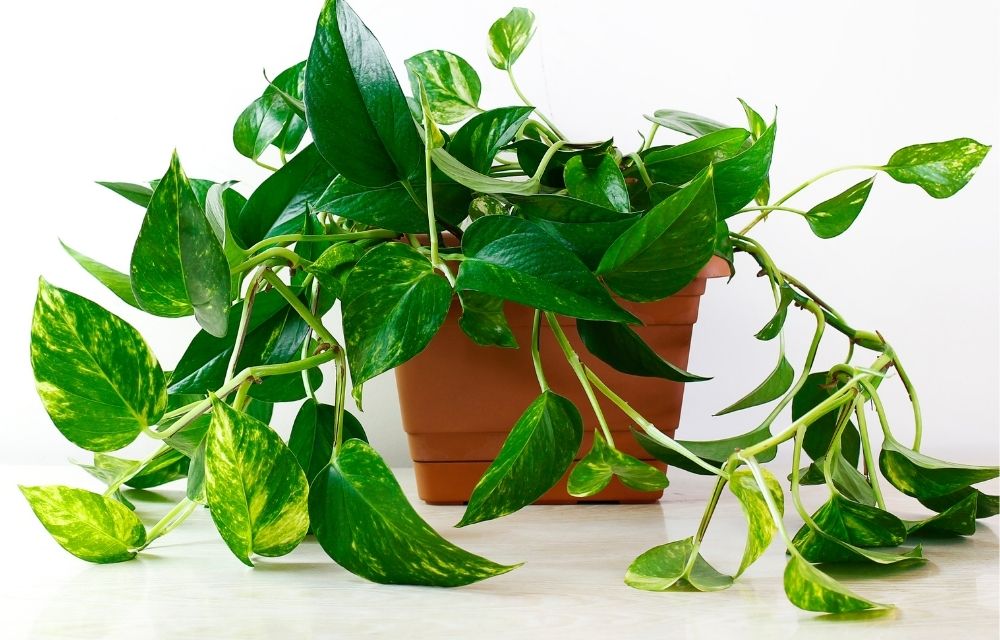
Golden Pothos
This is my favourite plant and you will often find loads of these or at least one pot in a plant lover’s house. Why? Because this plant is extremely easy to grow and propagate.
They grow well both indoors and outdoors and they can even grow well in just water or soil. This low maintenance vining plant, also drought tolerant, is an excellent indoor plant.
Water the golden pothos well, soaking the soil however make sure to drain all excess water. Pothos do not like soggy roots. Allow soil to dry out between watering. The pothos plant can grow in just about any room of your home, it will grow in low, medium, well-lighted spaces.
This is also known as the earth natural air purifier which is wonderful for keeping the air in your home fresh and vital.
How do you Make Homemade Kokedama?
You will need:
- Supplies Required
- Bonsai soil
- Peat moss
- Sphagnum moss
- Ferns (or similar plant type)
- Assorted jute twines
- Scissors
- Water
After you have collected all your supplies you can begin creating your kokedama!
Here are the 3 steps on how to make hanging moss balls::
Step 1: Make Soil Balls
Mix peat moss and bonsai soil together in a 7:3 ratio. Slowly add in water and mix until a consistency develops, forming a soil ball that stays together, about the size of a grapefruit/large orange.
Step 2: Wrap Ferns with Moss
Soak the sphagnum moss in water until damp, then rinse. Then, take the fern plants and clean the soil from the roots. Use the damp sphagnum moss to wrap the roots and bind the fern with twine.
Step 3: Form Soil Ball Around Moss Ball
Break the soil ball in half. Place the moss-wrapped plant in the middle of one half of the soil ball and then add the other side, shaping the ball as needed. Use sheet moss to wrap the ball and bind it with twine. When the kokedama is done, spritz it with water.
Caring for your kokedama:
Here are some important tips for kokedama care!
Watering
Soak: Depending on the size of your kokedama, fill a bowl, bucket or sink with room temperature water. Place your kokedama in the water, plant side up.
Next, push the moss ball down so that it is fully submerged and begins to absorb water. Allow soaking for 15 – 25 minutes, or until fully saturated with water.
Then you can remove your kokedama from the water, and gently squeeze the moss ball to allow excess water to drain. Allow kokedama to drip dry in a colander before bringing it back to its home.
Mist: Many kokedama appreciate misting in addition to soaking. Use a bottle that casts a fine mist and spray on and around plant foliage. Take care to mist in the morning, when the light is gentle so that the plant is not sunburned.
Determining When to Water is extremely important
Feel the weight of the ball. If the ball feels heavy, no water is needed. If it feels light, soak the ball per the above instruction. Watering frequency will vary based on where the ball is located, but max amount would be 1-2 times per week.
Feeding
During spring and summer, fertilize your kokedama monthly with a liquid indoor plant fertilizer at 1/2 the recommended concentration. All you need to do is mix the fertilizer into the water and soak or mist as usual.
Leaf Browning
Kokedama are susceptible to over-and under-watering just like any other potted plant. Leaf browning and crisping around edges tends to indicate under-watering.
A brown “mushiness” of the leaves or stems, black stems at the base, and leaf-yellowing tends to indicate over-watering.
Remember; all plants require more or less water depending on the season and weather conditions.
Best Plants for Kokedama Frequently Asked Questions
How long does kokedama last?
It can last for about 2 to even 3 years.
Do plants outgrow kokedama?
Yes, they can.
However, when the plant has grown too big for its kokedama you can trim it. Sometimes you might see roots growing through the moss but if the plant looks root-bound and unhappy you can simply plant the ball, twine and all, into a pot or the ground.
Otherwise, you can re-koke it. Add more soil, moss and string.
Are Succulents good for kokedama?
Yes, you can grow a kokedama succulent however it is definitely a more challenging plant to grow in comparison to the plants listed above.
What is the best soil for kokedama?
The soil mix for kokedama can include peat moss and/or coconut coir (to hold water), limestone (to balance pH), and clay (to provide essential minerals and to bind the mix together).
What is the best moss for kokedama?
Sphagnum.
(Sphagnum is the best moss for kokedama because it can hold 20 times its weight in water). Use the soil mixture to form a ball around your plant’s roots. Wrap the root ball in a layer of sphagnum moss. Make sure it remains in a sheet to prevent the root ball from falling apart midair.
It’s also important that the soil have small voids of air to support healthy root growth and provide drainage paths for excess water.
How often should you water kokedama?
Feel the weight of the ball. If the ball feels heavy, no water is needed. If it feels light, soak the ball in water.
Conclusion
In conclusion, kokedama is an interesting gardening technique that you can try for your garden. You can also make a kokedama as a gift for a plant lover that you care about.
It is definitely a unique style of gardening that may be very new to someone who has not heard of the kokedama. We wish you a wonderful gardening journey with your kokedamas!
Here are some related articles you might like:


